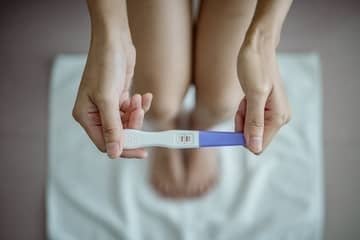
How does an abortion (spontaneous) take place?
Spontaneous abortion is a very sensitive topic for every woman (partner), which she does not want to live to see under any circumstances. We distinguish between spontaneous abortion, in which the fetus is naturally expelled from the body, while in the case of artificial abortion, there is an artificial termination of pregnancy. Spontaneous abortion is the unwanted termination of pregnancy by natural expulsion of the fetus. Spontaneous pregnancy loss is defined when the pregnancy lasts no longer than 20 weeks. The vast majority of spontaneous abortions occur during the first trimester, while the symptoms are relatively similar to a heavier period. Therefore, many women do not even have to find out that they were pregnant.
Miscarriage or abortion (abortion) and its symptoms differ based on the stage of pregnancy. Many women in practice report typical symptoms that are characteristic of spontaneous abortion. The main symptom indicating a miscarriage is heavy bleeding and spotting. Vaginal discharge is relatively intense and lumpy. Increasing abdominal pain or strong cramps are typical. The pain usually shoots into the back. Miscarriage often occurs outside of menstrual bleeding, and expulsion can occur at any stage of the menstrual cycle. In a standard natural abortion, a complete abortion usually occurs, when the fetus is completely expelled from the body.
In addition to a complete miscarriage, there is also a threatened miscarriage, in which the symptoms of miscarriage appear, but if the bleeding can be stopped in time, the fetus has a chance of survival. It usually succeeds in 50% of cases. An incomplete abortion, for a change, means that the symptoms will manifest themselves, but the fetus is only partially expelled from the body. It is necessary to see a doctor and the rest of the fetus must be removed with the help of curettage. Concealed abortion is when a woman does not even notice that she has had an abortion. The symptoms of abortion are absent. Usually, a missed miscarriage is discovered during an ultrasound and the fetus often has to be removed by curettage.
It is not uncommon for a woman to miscarry before she knows she is pregnant because the symptoms, which include heavy bleeding and abdominal cramps, are strikingly reminiscent of a heavier period. Therefore, distinguishing between abortion and menstruation can be more difficult in some cases, but during abortion, larger blood clots are also excreted during bleeding. The pain shoots into the spine or abdomen and gets worse. Miscarriage symptoms also usually last longer. Bleeding or self-cleansing after an abortion can take several weeks. At the same time, miscarriage often occurs outside of menstruation during the cycle itself, which is usually a clear sign that something undesirable is happening in the body.
There are many reasons for abortion, while there are risk factors such as older age, infection (septic abortion - infection of the uterus), accompanying diseases (diabetes, high blood pressure - preeclampsia), placental defects, genetic or chromosomal defects of the fetus, smoking, drugs and alcohol. underweight, obesity, uterine defects, medication use, problems with the cervix and many other causes.
The most important thing for a woman is to be able to cope with the abortion. Feelings of sadness, anger, disappointment or helplessness are natural, while a woman may develop blocks and traumas that can prevent further pregnancy. Partner support and open communication are important in this case. Coping with an abortion is very individual and each woman has her own mechanisms for coping with such difficult situations. In case the partners try to get pregnant again, according to doctors, they should try to conceive in 3 months at the earliest.
Pridať komentár






